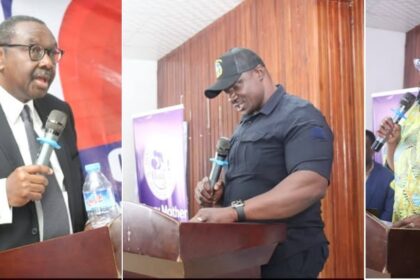Since the ascendency of President George M. Weah, the country has continued to observe an upward trend in infrastructure development, ranging from near-stable electricity, pipe-borne water, construction of housing units, hospitals, schools, offices for government ministries, agencies and state-owned enterprises, but above all the construction of community and feeder roads and major highways, which has dominated the past five years of the administration.
The National Road Fund (NRF) has been instrumental in contributing funds to the Ministry of Public Works in carrying out road rehabilitation, maintenance and construction. In 2022, the NRF contributed over US$35 million toward the national effort.
However, investigation conducted has proved that, if the Road Fund Management’s proposed plan is executed properly, the entity could raise over US$50 million annually, which could speed up road projects around the country.
It is approximately two months to the rainy season, and Public Works is said to be exerting every effort to complete a number of road projects before the start of the heavy rain, and continue the progressive work next dry season. But this cannot be achieved without the requisite funds needed to implement the projects.
An analysis of potential revenue from a toll system on selected highways project by the NRF puts income generation at US$4,998,528 (four million nine hundred ninety-eight thousand five hundred twenty-eight United States dollars) per annum.
The NRF took into consideration only three routes: Bo Waterside, Buchanan and Ganta corridors, estimated 1,749, 1,871 and 6,306 vehicles and motorcycles plying the three highways, respectively, on a daily basis. According to the NRF analysis, a motorbike would be charged US$1, light vehicle US$2, and heavy duty vehicle US$5. The total sum estimated to be collected on a daily basis stood at US$17,356, on a monthly basis, US$416,544, and US$4,998,528 on a yearly basis.

Toll System implementation is often considered immediate option and a supplementary support to revenue cushion whenever a proportion of fuel taxes have declined. The NRF has, in this vain, produced a preliminary estimate on potential revenues for prudent decision about the potential possibilities to the toll-supported option.
The detailed NRF analysis also considered potential revenue estimate from axle load control on roads throughout the fifteen counties, projecting US$8,624,880 per year.

In collaboration with the Ministry of Transport, the NRF put the estimate of annual vehicle registration at US$3,185,070. The projection of additional levies on drivers’ license fees was put at US$3,538,215.

All these amounts combined summed up to over US$20 million. When added to the amounts generated from the road user fund being accumulated through amounts added to the prices of gasoline and fuel, which generates over US$30 million annually, the NRF would be generating over US$50 million per year.
The NRF, through its Chief Executive Officer (CEO), Boniface Satu, has emphasized the need to elevate the institution to an autonomous agency, which will in turn provide the independence needed to implement the road agenda and guarantee the trust of international partners to intervene with the necessary assistance.

In his State-of-the-Nation address on January 30, 2023, President Weah emphasized the need for the National Legislature to prioritize what is most needed for the development of the country, of which road connectivity cannot be left out.
Also, CEO Satu has underscored the need for all stakeholders to put their hands on deck in order to achieve maximum result in road connectivity.
However, the bill to elevate the National Road Fund (NRF) to an autonomous status, which was introduced by Margibi County’s district #1 Representative, Tibelrosa S. Tarponweh in mid 2022, still languishes at the House of Representatives.







